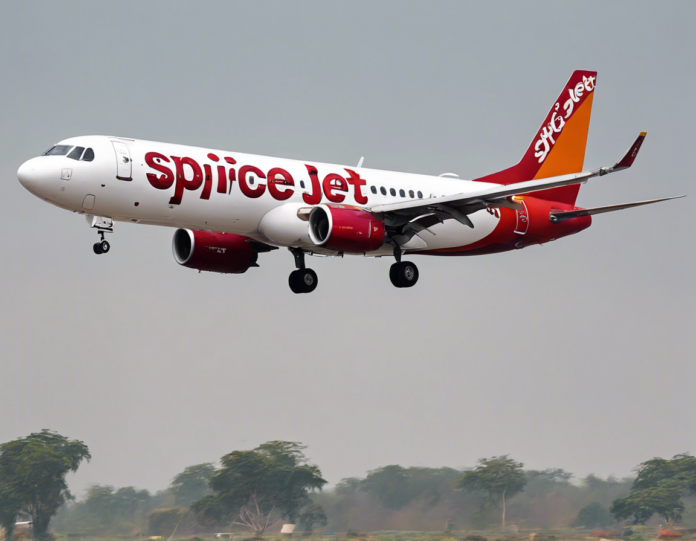Introduction
SpiceJet, one of India’s leading low-cost airlines, has been a significant player in the aviation industry since its establishment in 2005. While the company has faced its share of ups and downs over the years, it has managed to maintain a strong presence in the market. One crucial aspect that investors closely monitor is the company’s share price trends on the stock market. In this blog post, we will delve into the recent trends in SpiceJet’s share prices, analyze the factors influencing these trends, and provide insights for potential investors.
Overview of SpiceJet
Before diving into the share price trends, let’s first understand some key aspects of SpiceJet. The airline operates a vast network of domestic and international flights, catering to both leisure and business travelers. With a focus on providing affordable air travel, SpiceJet has carved a niche for itself in the competitive aviation sector.
Recent Share Price Performance
In the past year, SpiceJet’s share prices have experienced fluctuations in line with the broader economic conditions and industry-specific factors. For instance, the onset of the COVID-19 pandemic in 2020 significantly impacted the aviation sector, leading to a sharp decline in air travel demand and consequent stock price corrections across airlines, including SpiceJet.
However, as the aviation industry gradually recovers from the pandemic’s adverse effects, SpiceJet has shown signs of resilience. The company’s share prices have displayed a gradual upward trajectory in recent months, reflecting investors’ growing confidence in its ability to navigate challenges and capitalize on emerging opportunities.
Factors Influencing Share Price Trends
Several factors can influence the share price trends of an airline company like SpiceJet. Some of the key factors include:
-
Operational Performance: Investors closely monitor SpiceJet’s operational performance, including factors such as load factor, revenue per available seat kilometer (RASK), and cost per available seat kilometer (CASK). Strong operational performance can positively impact share prices.
-
Aviation Regulations: Changes in aviation regulations, fuel prices, and geopolitical developments can have a significant impact on airlines’ profitability and, consequently, their share prices.
-
Competitive Landscape: The competitive dynamics within the aviation industry, including pricing strategies, route expansions, and partnerships, can affect an airline’s market position and share prices.
Analyzing Financial Indicators
Investors often rely on financial indicators to assess a company’s financial health and growth potential. When analyzing SpiceJet’s share price trends, investors may consider the following financial indicators:
-
Earnings Per Share (EPS): EPS reflects a company’s profitability and can influence its share prices. Investors typically look for consistent growth in EPS over time.
-
Price-to-Earnings (P/E) Ratio: The P/E ratio compares a company’s stock price to its earnings and helps investors evaluate its valuation. A lower P/E ratio may indicate an undervalued stock.
-
Debt Levels: High levels of debt can pose risks for companies, impacting their share prices. Investors may monitor SpiceJet’s debt levels and debt-to-equity ratio.
Investment Considerations
For investors considering investing in SpiceJet, here are some key considerations to keep in mind:
-
Industry Outlook: Stay informed about the latest developments in the aviation industry, including market trends, competitor actions, and regulatory changes.
-
Financial Performance: Review SpiceJet’s financial reports and performance metrics to assess its profitability and growth prospects.
-
Risk Management: Evaluate the risks associated with investing in airline stocks, such as fuel price volatility, economic downturns, and regulatory challenges.
Frequently Asked Questions (FAQs)
- What has been the recent trend in SpiceJet’s share prices?
-
SpiceJet’s share prices have shown a gradual upward trajectory in recent months, reflecting positive market sentiment.
-
How do operational performance indicators impact SpiceJet’s share prices?
-
Strong operational performance indicators, such as load factor and revenue metrics, can positively influence SpiceJet’s share prices.
-
What financial indicators should investors monitor when analyzing SpiceJet’s share price trends?
-
Investors should consider indicators such as EPS, P/E ratio, and debt levels when assessing SpiceJet’s financial health and growth potential.
-
What are some key factors that influence SpiceJet’s share price trends?
-
Factors such as operational performance, aviation regulations, and the competitive landscape can impact SpiceJet’s share prices.
-
Is investing in airline stocks like SpiceJet risky?
- Investing in airline stocks carries risks related to industry volatility, economic factors, and regulatory changes. It is essential for investors to conduct thorough research and risk assessment.
In conclusion, analyzing SpiceJet’s share price trends requires a comprehensive understanding of the aviation industry, financial indicators, and market dynamics. Investors can make informed decisions by monitoring key factors influencing share prices and staying abreast of the company’s performance. As with any investment, conducting thorough research and seeking professional advice are crucial steps towards making sound investment choices in airline stocks like SpiceJet.




